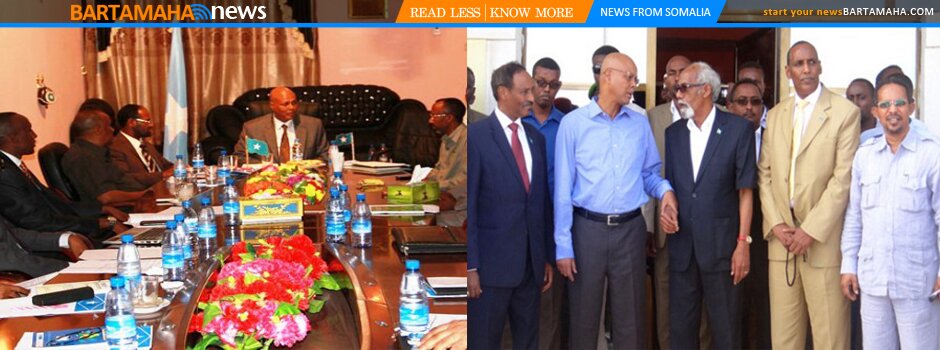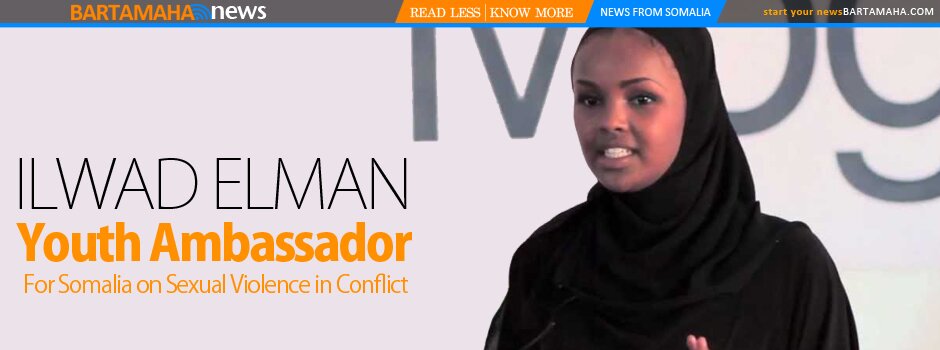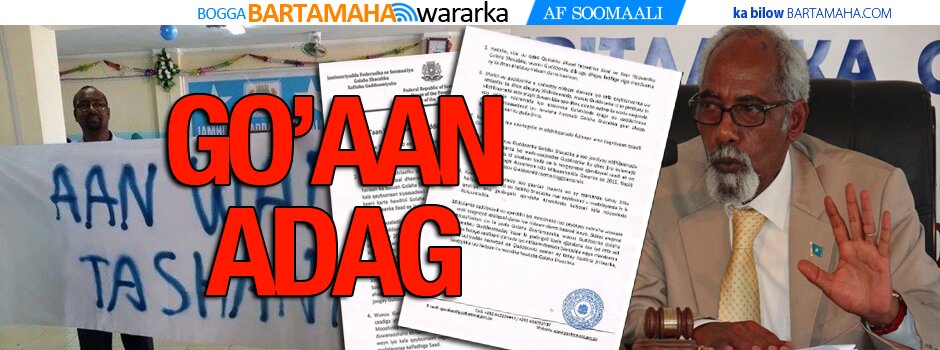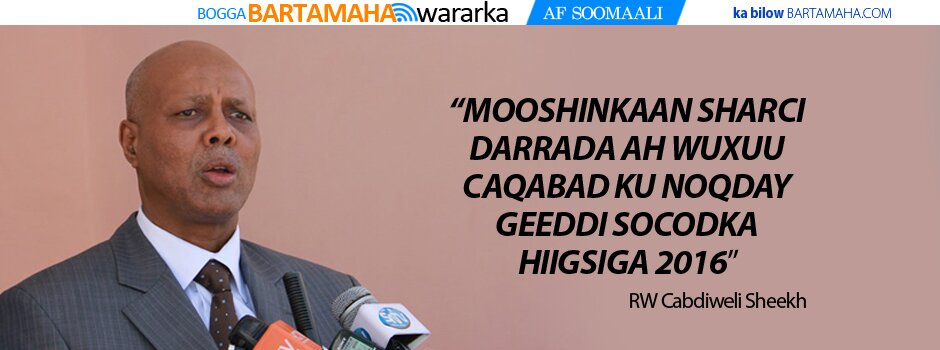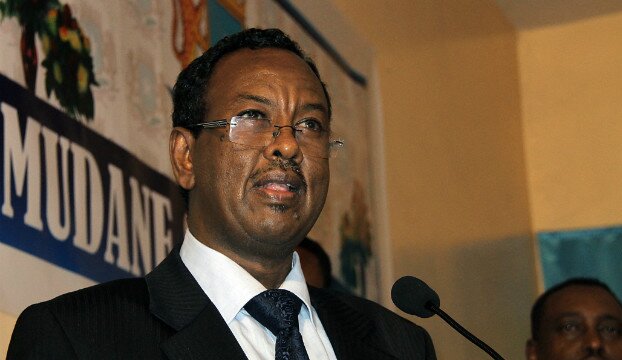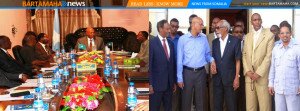No way out: Inside the world’s biggest refugee camp .
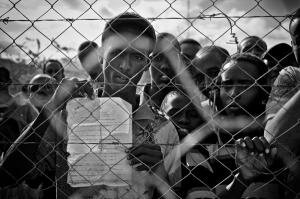 Bartamaha (Nairobi):-Eyes. that’s the first thing I make out in the room’s low corners and overwhelming shadows. Eyes, unnaturally wide, and mechanically chewing jaws. They’re all sitting on the floor and they’re all men – perhaps 60 of them. Their talk lulls suddenly as I enter and is soon restricted to paranoid sentences that shoot through the air like arrows. These are miraa chewers: users of the amphetamine-esque plant known more commonly as “khat”. Four of them stand and crowd me, their faces stretched expressionless by the effects of the drug. I can see chewed lips and far more of the sphere of eyeballs than is comfortable. The throng swells. Bodies push closer. They talk in Somali, all at once. I don’t know what they’re saying. Then, to my right, someone translates into struggling English: “Do you understand? These are people that are lost in the wilderness. Do you understand? It’s like we’re in a concentration camp. We cannot move. We come here all day because we’re idle. No work. No education. Nothing to enjoy. Nothing like happiness. Do you understand? We fear there’s military men; generals among these people. We run from Al-Shabab and we fear Al-Shabab can follow us here. Do you understand?”
Bartamaha (Nairobi):-Eyes. that’s the first thing I make out in the room’s low corners and overwhelming shadows. Eyes, unnaturally wide, and mechanically chewing jaws. They’re all sitting on the floor and they’re all men – perhaps 60 of them. Their talk lulls suddenly as I enter and is soon restricted to paranoid sentences that shoot through the air like arrows. These are miraa chewers: users of the amphetamine-esque plant known more commonly as “khat”. Four of them stand and crowd me, their faces stretched expressionless by the effects of the drug. I can see chewed lips and far more of the sphere of eyeballs than is comfortable. The throng swells. Bodies push closer. They talk in Somali, all at once. I don’t know what they’re saying. Then, to my right, someone translates into struggling English: “Do you understand? These are people that are lost in the wilderness. Do you understand? It’s like we’re in a concentration camp. We cannot move. We come here all day because we’re idle. No work. No education. Nothing to enjoy. Nothing like happiness. Do you understand? We fear there’s military men; generals among these people. We run from Al-Shabab and we fear Al-Shabab can follow us here. Do you understand?”
I do understand. At least, I understand as much as is possible for someone who’s only been here a few hours. I’m in Dagahaley in the remote north-eastern province of Kenya, one of three neighbouring settlements that make up the world’s largest refugee complex, known as Dadaab. There are more than 290,000 people here, in a 50 sq km space metered out in 1991 for just 90,000.
They’re mostly Muslim Somalis, arrived from the African state just 100km away. It’s a country known internationally for siding with the USSR during the Cold War and the berserk clan conflagration that began with the failing of the Soviet project, then the subsequent rise of the savage Islamist force “Al-Shabab” who, since 2006, have caused the nation to collapse into ever-unholier depths of mayhem. Its capital, Mogadishu, is one of the world’s most dangerous cities and its effectively government-less state is largely responsible for the current pirate menace.
Every child born in that place is pulled from the womb to be immediately met with the worst news of its life: it’s a citizen of Somalia, condemned, more than likely, to an existence marked by danger, atrocity and mourning. Which is why many of the good people – and, in among them, some of the bad – flee in cars and buses and occasionally on foot, braving bandits and corrupt, violent, Kenyan police, to come here. In the absence of a resurrection of sanity in their homeland, they hope for resettlement somewhere – anywhere – else. These are the things I understand about the miraa-fiends crowding me on this ordinary Wednesday morning. But it’ll take many more days before I’ll begin to understand the rest.
I leave the shadowy miraa-house and squint against the world of light outside. The large market of Dagahaley is humming to itself noisily in the many self-assured tones of commerce. There’s the Al Ainusham Cosmetics shop; the Noor photo studio; the Dahab Cyber Café; the Dagahaley school for secondary and primary learners (“Motto: If you can dream it you can do it”). There’s a bureau de change built from mud and sticks and an ice factory of corrugated tin. The sight is unexpected – there are no obviously starving people, there isn’t that sour, ripe, sticky stench of heat-swollen decay. There’s life in Dagahaley and, to my surprise, it doesn’t look too much like hell. Until I round the corner, that is, and see the first rumour of it, subtle and silent yet undeniably there.
It’s just a building, not even that: a rough wooden structure perhaps 50 feet long. Its roof is cheap metal and its walls are barbed wire, which gurns and swells and sags where hundreds, perhaps thousands, of people have clung to it. There’s a door made of dented rusted iron and, behind that, six runs of a kind you might expect for pigs in a slaughterhouse. Except these are for people – hungry refugees queueing for the rations they’re provided with every 15 days by the United Nation’s refugee agency, the UNHCR.
They’re queueing outside it now – not as many as usual. On a normal morning, 18,000 pass through here, but this is the last day of the month’s second distribution. These are the ones who’ve been turned away before. On registration, every refugee is issued a ration card, so precious that most carry it around their neck on a string. It has details of the quantity of food to be issued along with their identifying number, which is checked against a manifest. But sometimes those numbers go missing from their list.
To the left queue the men, surly and slender, some in traditional keffiyeh that cast shadows across their cheeks, and eyes which stare at me in expressions so void-like, it feels as if my gaze is being sucked back into them. The women, in colourful hijabs, grip their ration cards, hold them out in front of themselves like protective talismans.
Finally, the door opens. It’s females first, one worker tells me, because “women are more orderly”. The lucky majority whose numbers are found are pushed roughly by the arm into one of the six runs. The rest stand and look uselessly about them, having learnt by now the futility of pleading mercy with the vast unseeing bureaucracy above them, represented here by a list of digits on some paper and three irritated low-employees.
“I have a card for six people,” a woman tells me. “But a new baby had to be added and now I’m not on the list. This is the second time I’m not on it. Almost one month of food has been lost. I have to beg from neighbours.”
“Why aren’t you on it?” I ask.
“That is something I cannot explain.”
“Can’t you complain to the UNHCR?”
“They’re very busy there. The gate is very strict. Sometimes you cannot even go in.”
Behind us, a raw heave of anger. I turn to see the door being forced closed against a man in a Manchester United football shirt who’s trying to punch his way inside. Calm is restored quickly and more women are pulled into the system. I follow one of the runs. It continues around a corner into a dark shed composed of cages which are filled with workers, sacks of flour, pulses, cornmeal, salt and cans of vegetable oil. Each refugee takes a bag and has it filled through a hole in the wire to receive their calorific total of 2,100 per family member per day. It’s chaotic – hands and arms and sacks push through the hole; the floor and the workers are covered in flour: one carries a calculator in a protective sandwich bag. And then, another fight. The men have started filing in. One is demanding more flour than he’s due. He hits the server around the face once, twice, three times – fat, ricocheting slaps around the jaw. He’s pushed back. Nobody reacts with alarm: this is normal. The worker who was assaulted starts to laugh. He’s laughing.
Outside, a dilapidation of old taxis with Somali number plates have gathered, among youngsters with wooden handcarts and older people with donkeys and traps. Two thousand one hundred calories sounds like enough. But how do you get your calories home if you live five kilometres away? You hire one of these. How do you pay them? You sell some food. And how do you avoid the inevitable malnutrition by adding vegetables to your diet? You sell more food. What if you need clothes? More cooking oil? (Nobody considers the ration enough for more than three days.) What if you’re like 21-year-old Ali Abdi, in love and dreaming of marriage?
“I have to ask my father if he can afford the expenses of the wedding,” Ali tells me, leaning on his hips. “It’s a very big deal of money. Almost US$1,000. If he tells me, ‘I don’t have for you’, well then, I am a man.” He prouds his little chest up and tries to look severe. “I will try my best to pay. I’m expected to pay, inshallah.”
In fact, Ali might be being optimistic about his costs. In the camp’s early days, entire weddings cost as little as 15,000 shillings (US$200) and the groom’s family usually slaughtered a goat for the feast. But since the resettlements began, expectations have gone haywire. Refugees who moved abroad without their lovers returned here to marry. But they came back with money. Camels were slaughtered, each one costing up to 50,000 shillings (US$650). Word spread. Now all the girls want their special day anointed with the blood of a camel.
Five minutes away from the market, I find an area that’s protected by more barbed wire: the place for refugees deemed to be at risk. Everyone else lives in “the blocks” – primitive communities of mud, twig and recycled tin that fan away from the market deep into the desert. Conditions there are often barely survivable, but here things appear worse. These people live for years in tents and cook under wigwams of sticks, scavenged plastic and cardboard.
“I have a story to tell,” says a man in a grubby T-shirt. He’s standing too close, his eyes roving in jittery arcs. I want to avoid him: he’s clearly insane. “But this is a story that cannot be told in public,” he says, turning away for me to follow, tapping his way delicately with pointed toes.
It turns out that 30-year-old Dires Malikie is not mad, but blind. His answer to my question, “Why are you under protection?” takes more than an hour.
“I was an English teacher in Ethiopia when I was dismissed for being of the wrong tribe. I went back to university to study law. The election of 2005 was disputed and all students were apprehended by the government under charges of agitation. Soldiers came to our dormitory at night. At first I thought it was friends joking with us but they beat us with gun butts, sticks, everything. They sent soldiers who cannot speak our language, so they cannot understand our pleas for mercy. This force is called Agazin. They’re trained by Koreans. These Agazins can continue beating you with no sympathy, with no humanity, without stopping. For them, beating you is like breaking a useless glass.
“I was placed in a large cell that was so packed with people I couldn’t move. Every day we were called separately to be beaten; to confess. They put a gun in my mouth and used electricity. The pain, even words cannot express. I begged, ‘Please, you are hurting me, in the name of God’. If you confess, you’re killed. After three months I didn’t confess and was released after signing a document saying if I was found with any anti-government activities I’d be killed.
“I couldn’t return to university so I started a music group called Wagagen – it means ‘Twinkle’. A song we played was reported as agitating people to fight against the government. It was not true, but I was arrested. My wife and I escaped to Dadaab.
“In this place, walls have ears. We’ve seen people can be killed in the camp, for reasons both political or religious. That is why I want to have good privacy. We are Christian. We are here alone with 99,000 Muslims. They abuse us. They throw stones. If I put a cross round my neck I would be killed. We are isolated. Even if we cry, there is no one that will hear.
“Me and my wife were once very deep in love. Now it is fading away because whenever the food is finished, the only way we can end our anger is by quarrelling. When you’re a refugee, you cannot go backward, you cannot go forward. You have nowhere to go. For us the grave is only 100 metres away from where we’re sitting now. There’s no solution. We don’t hope anything for our future.”
“Do people sometimes commit suicide in the camp?” I ask.
“Yes,” he says. “Even my wife is one example. I found her with a rope.”
“What would you do if she succeeded?”
“My only choice would be to do the same.”
Is it true that if Dires wore a crucifix he’d be killed “immediately”? Is there really an elite torture squad “trained by Koreans”? It’s hard to know: dreadful myths and rumours thrive in this place, growing in size and madness as they germinate between minds. Médecins Sans Frontières (MSF), the medical NGO that is hosting my trip, have to educate against the belief that Aids can be cured by sex with a virgin. If you walk past the slaughterhouse, where camels are deconstructed in a violent carnival of blood and innards at dawn every morning, the butcher Dahir will swear that marabou storks have a sixth sense for detecting death. There are rumours among the devout that the women of Nairobi dress in brief skirts that expose their pubic hair. More than one person stops me to frantically insist that the UN are conspiring to starve them all to death.
When stranded in a place like this, your instinct for reality must quickly suffer. Panic and paranoia throttles caution and optimism, and truth takes on a rare and fragile quality. That these people are fleeing nightmares can only exacerbate their susceptibility to these crazy stories. After all, when the events you’ve lived through are unbelievably horrific, why shouldn’t you believe in horrors?
But that there are genuine dangers isn’t in doubt. There’s hunger and sickness, of course. There are guns in the blocks and Al-Shabab recruiters, sending the young back to Somalia to fight. There are lions and hyenas. Sudden rains and raiding bandits have killed in the past. There’s mental illness: a famed lunatic who stalks the market armed with a machete. On my fourth day here, a man stood coolly watching me as I spoke with someone, his hand posted through the fly of his jeans, gripping his penis. The following day, I met 23-year-old Mohamed Mokilid on his way to the MSF hospital. He was bleeding in his hand. Someone told his sister, “I will fuck you” and when Mohamed defended her, the abuser declared, “I will also fuck you” and tried to stab him in the throat.
But danger also comes from that primordial system of suspicious falsehood that afflicts much of the rest of Africa and of humanity: prejudice. People discriminate on grounds of religion, tribe and nationality; on clan seniority; on whether their lips and nose betray them as a bantu or cushite racial type; on how long they’ve been in Dadaab (one recent incomer was told, “You are a new arrival. You are nothing here”); even how far away they live from the market. It’s true: many people in Dadaab are as cruelly stupid as they are on the rest of the planet.
But the principal fear that pesters the daily wellbeing of everyone is surprising: bureaucracy – the omnipotent machine that grinds silently above them, in all its terrifying majesty. Refugees must submit themselves entirely to vast organisations for almost everything: sustenance, shelter, protection – even hope. These conglomerations are typically short of staff, funds and effective power. The refugee frequently experiences them not as you might expect – as saving angels – but as endless queues in the heat-stroking sun, hardened officials, aggressive security guards, senseless diktats posted on noticeboards. There’s corruption. Mistakes are made, decisions reversed, explanations rarely given. Take, for example, the case of Ahmed Mursal…
I meet the 40-year-old in the dwelling he shares with another family. Like most of the residences in these blocks, it’s kept defiantly clean. The rough rectangle of land is perhaps 20 metres by 20, portioned off behind bush-wood fences. Each small building is a room. The walls are built from gathered twigs or mud bricks, which are smothered in a layer of more mud and cow dung to aid waterproofing. The doors are flattened vegetable oil cans sewn together with wire. The “sofa” in the living area turns out to be yet more cleverly sculpted mud with a sheet draped over it. Outside, there’s a doomstruck goat. In the branches of a tree – where, in kinder worlds, you might expect to find leaves, blossom or fruit – strands of plastic, blown in by the desert wind, flutter uselessly. Twelve people live here.
Ahmed’s face has taken on some of the qualities of the wall that he’s leaning against: it’s a weathered landscape of craters, cracks and ditches and you find yourself intimidated by what it silently tells you of its uneasy survival. Ahmed was a farmer, born with no feet and only a thumb and forefinger on each hand. When the clan wars blew into his village, his father and brothers were shot by militiamen – machine-gunned in their home. Helped by fellow Somalis who were fleeing to Dadaab, he arrived in 2000. He’d been here six years when he heard of a US resettlement scheme for the disabled.
“I passed all my exams and interviews,” he says. “I was lucky enough to be selected. I felt alive! I dreamed of a job and a modern house with all the facilities – cooker, refrigerator and a big bed. I was taken to the airport transit centre in Nairobi. We stayed there for three months. One evening we were given our tickets, they were checked and we were told we were ready to fly. We were taken inside the airport. Then we were told, ‘Sorry, we don’t have your names’. I cried that day. We all did. We felt like dying.”
Before he left, there had been a party to celebrate Ahmed’s resettlement. Three months later, he stepped off the bus at the same spot he’d so hopefully departed. Why did this happen? Nobody has ever told him.
Back in the market, 17-year-old Asha Haji is walking past the lines of new arrivals sitting in the hot sand, waiting to be registered by the UN. Three guards armed with billy-clubs and loudhailers seem constantly in the process of moving these people – numbering in the hundreds – around. It’s impossible to know why: it seems absurd. First they’re moved here, then further to the left, then back over there again. People protest. Billy-clubs are raised. There are shouts, shoves, they move – they’ve no choice. It’s like some perverse exercise routine: these incomers are being got into psychic shape for the refugee life ahead of them, which will be mostly characterised by discomfort, hunger, powerlessness and suppressed, pointless rage. Asha passes them by, barely noticing. It’s like this almost every day. Besides, she’s got other things to think about: she’s on her way to the police station.
Two months ago, Asha’s husband stole a mobile phone to buy miraa. Then he disappeared. The phone’s owner insists Asha has it. Last night he beat her. Her mother-in-law agreed with her attacker and threw her and her two children out of their home. She kept all her clothes as a ransom.
“Is it true?” says the Kenyan police officer. His “station” is a concrete room, which is flanked by empty prison cells. He sits at a dented metal desk, the only light coming from the glassless window behind him. The wind bullies the pages of his huge ledger in which he carefully writes the details of all the crimes reported to him. He’s menacingly effeminate and his thick green uniform is several sizes too big for him. He makes no eye contact and talks with measured pauses and pursing lips, his humanity vanished entirely behind his clothes and words and formal manner.
Asha sits, her seven-month-old on her hip, and answers his questions.
“What is the name of your husband?”
“Abdul Raman.”
“And where is Abdul Raman now?”
“I don’t know.”
“When did you see him last?”
“Two months ago.”
“Your husband is missing for two months. Is it true?”
“Yes.”
“Is it known where he went?”
“No.”
“Have you made a missing persons report?”
“I was not aware of the procedure.”
Long pause for gravitas.
“According to the laws of Kenya, if somebody goes missing (dramatic pause) for two days (dramatic pause) it must be reported to the police. Such a report has not been made. Is it true?”
Forty minutes later, when the interview ends, I ask the policeman what will happen now. His chin rises and he glowers powerfully at nothing.
“We will arrest them, sir! We shall deal with them according to the laws of Kenya!”
Asha, when I ask her, is confident of a just outcome. She hasn’t spoken to the people I have who are more familiar with the rules. They say it costs 3,000 shillings to have someone arrested and beaten by the police. If the arrestee hands over a further 1,000, they’re released without charge.
It takes six days of wandering before I catch a hint of the final truth of this place. When I first saw Dagahaley’s market area I was surprised by the absence of obvious misery. But I’ve since come to realise there’s a weakness in our powers of imagination. If we see blood, guns or instruments of torture, we can immediately picture all the relevant agonies. But theirs is a slow species of horror, one that you can’t easily witness or photograph. It’s a sufferance of time, of monotony, of stuckness. Even most prisoners have a release date, a target to fire their hope at. But many of these people have been stranded for 19 years with no clue if or when they might be resettled. I only fully sense how this might feel when the pilot of the UN jet that’s taking me home finally turns on his engines. I experience a cascade of emotions. It’s relief, of course: I’m moving, making progress, experiencing change. I’m suddenly in a state dreamed of by millions of displaced people on every continent. I’m unstuck.
———————-
Source:- independent.
Comments
comments
 Calendar
Calendar






